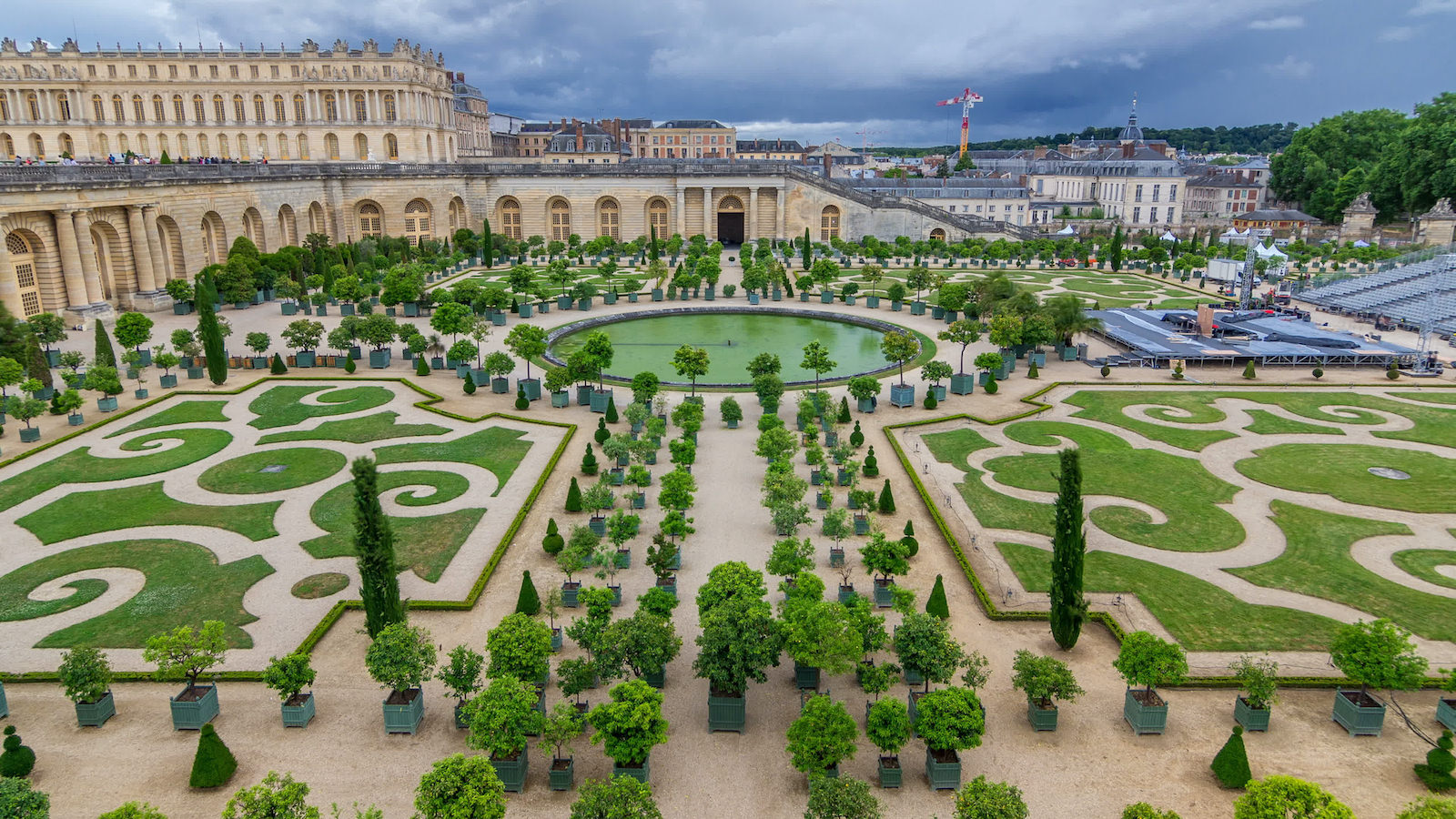Paris in numbers

If we wished to describe the City of Light with numbers, so as to be able to grasp its size as well as its importance, we should mention the following:
It has 160 museums, 200 galleries, 140 theatres, 600 cinemas, 96 cabarets, 102 night clubs, 435 parcs-gardens-squares and more than 550.000 trees. The restaurants exceed 10.000, with prevalent those that serve French cuisine. 10 million tourists visit annually the Notre Dame of Paris, 8,5 million the Sacre Coeur, 5,9 million the Eiffel Tower and 5,8 million the Louvre Museum.
Of the most important sites are the Tour Eiffel, the Arc de Triomphe, the Sacre Coeur in Montmartre, Notre Dame de Paris, the Bastille monument, Place Vendome, Place des Vosges, the museums Louvre, Orsay, Picasso, Beaubourg (with exhibits of modern art), the Sorbonne university, as well as the Chateau de Versailles a few kilometers outside of Paris.
Paris is maybe the only city in the world where nobody can say that they don’t know what to do! Museums and exhibition halls come in tens, theatres, cinemas, concert or recital halls, even special places for children, are innumerable.
If you are a romantic and your dream is to walk in Parisian alleys or admire French etchings in the most picturesque little shops you have ever seen, then Montmartre is the place to be. The time seems to have stopped here. Charming painters with berets, galleries scattered everywhere and famous stars wandering around set the scene in this region. In the evening, the picture numbs all the senses. Then again, if you would like a spicier diversion, you must visit the Pigalle area, one of the most cult neighborhoods of Paris. There you will have the opportunity to see authentic street-walkers, but also to have fun in the famous Moulin Rouge.
A tour in the narrow alleys of Saint Germain in Quartier Latin would be a great idea, especially at sunset, when the students of Sorbonne invade the cafes of the area. The northern river bank has been, since the time of Charles, the traditional space of aristocracy. The palaces, the squares, the gardens, the heavily decorated buildings and the avenues accentuate this feature. Very beautiful is also the area between the Place de la Bastille and the Place des Vosges (in Marais), filled with art galleries and featuring the house of Victor Hugo and the gorgeous square.
The banks of the canal accommodate lovely bistros ideal for lunch, and a trip with a riverboat, that goes as far as Notre Dame de Paris, is deemed necessary.
For your shopping, Paris has to offer not just shops specializing in women’s and men’s clothing, but entire streets. From Rue de Rivoli and Faubourg Saint Germain to the shops around Place Victor Hugo, to Avenue Marceau and Avenue Francois 1er. And if you are willing to spend a few tens of thousands of Euros for some truly remarkable jewellery, then Place Vendome even offers crowns for princesses.
Visits around

There are many remarkable places around Paris besides Disneyland. Depending on the time that you have at your disposal and your interests you can plan various visits, like to Canal Saint-Martin and to the International Automobile Centre. However, you should not miss the Parc de la Vilette and the Chateau de Versailles.
The Parc de la Villette stretches for 55 hectares. In it you can find the Cite des Sciences et de l’Industrie, a museum for science and technology. There you can see the Planetarium, the Arianne rocket, a Mirage fighter and the IMAX theatre “La Geode”.
In Versailles, apart from the Palace, the visitors enjoy the gardens with their geometrical shapes, the footpaths, the flowerbeds, the orange groves and the fountains. The main buildings of the palace are the marble courtyard, the Opera, the Chapel Royal, the Halls of Mirrors, of Venus and of Apollo and, naturally, the Queen’s Bedchamber.
Tips
- 160 are the museums in Paris, some among them with strange exhibits. If you are looking for something different, visit the Musee du Tabac (exhibiting carved pipes), the Musee du The (500 varieties of tea) and the seven-storey Musee de l’Erotisme (near the Moulin Rouge).
- Don’t rush to buy an etching from the open-air bookshops at the Seine. On weekends, at the Porte de Montreuil flea-market, you will find books with tens of etchings 100 years old at the price of one at the Seine.
- Kleptomaniacs don’t need to take chances: Paris Picardy at Palais has a collection of dishes, ashtrays and cups with the logo of famous hotels, restaurants and airlines.
At the hang-outs of the famous ones
In the 6eme Arrondissement are located many good old cafes and bistros, like: “Les Deux Magots”, “Cafe de Flore”, “Lipp”, “Le Montana”, “LaMediterranee”, “Le Procope” and others that were frequented in the past by Henry James, Jean-Paul Sartre, Simone de Beauvoir, Louis Aragon and many other French or foreign writers, artists, intellectuals and poets. In this region are situated the church of Saint-Germain, many bookstores and art galleries, the Ecole des Beaux Arts and hotels that, at times, accommodated great writers. In the Hotel des Beaux Arts died in 1900 the author of “The Picture of Dorian Gray”, Irish poet and playwright Oscar Wilde. In the same hotel lived from 1977 to 1984 the great Argentinean writer Jorge Juis Borges, the American Jack Kerouac and at times the French Nerval, Andre Gide, Pierre Louis, Marcel Schwab and Marcel Proust.
As you can imagine, the bistros of the area are rich in tradition and literary history, since they have seen some of the greatest writers and artists eat, drink, meditate, get involved in heated conversations, argue or write parts of their work in their confines: Ernest Hemingway, Blaise Cendrars, Cezanne, Zola and Max Ernst haunted “La Closerie des Lilas”, Jean Cocteau preferred seafood therefore he frequented “La Medirerranee” in Place Odeon, Paul Valery went to “Laperouse”, Roman Polanski frequented the cafe “La Coupole”, while Aleksandr Solzhenitsyn was a regular of “Dominique”. Finally, Voltaire frequented “Le Procope”, F. Scott Fidgerald the “Lipp” and Jean-Paul Sartre the “Cafe de Flore”.
The city attracted always the greatest talents of the world. It was heaven for those who sought the ideal place to express themselves and to live their lives to the fullest. Whom should I mention first? Thomas Jefferson, before becoming President of the USA, lived near the Avenue des Champs-Elysees (1780). The composer Richard Wagner lived at no 11, rue Jacob. Salvador Dali was a resident of “Hotel Meurice”. Pablo Picasso lived in the “Bateau Lavoir”. Rudolf Nureyef was the director of the Opera Ballet. Leon Trotsky, before the Russian Revolution, frequented with Lenin the “Cafe du Dome”. Dutch painter Vincent van Gogh lived with his brother at no. 56, rue Lepic. And Edward, Duke of Windsor, lived self-exiled in the Bois de Boulogne when he resigned from the throne in order to marry the woman he loved.
12 more reasons for you to wander around in the City of Light:
- To slip a coin in the telescopes of Montmartre and enjoy the panoramic view of Paris.
- To read the word “I love you” in 311 different languages on the wall of Place des Abbesses.
- To taste the confection of Amelie: croissant with grated walnuts dipped in honey, in “Au Pain Rustique”, 12, rue Coustou.
- To climb to the famous gutters of Notre Dame and have a “bird’s eye” view of the city.
- To visit the Pompidou cultural centre, the heart of modern art.
- To make romantic strolls along La Seine watching the bateaux-mouches (the riverboats of Paris) pass by, to leaf through Asterix comics at the stands of the Bouquinistes along the shore – and, if you have the right company, to kiss in public.
- To experience the atmosphere of the literary cafes.
- To read, in the Musee Carnavalet, the love letters of Madame de Sevigne.
- To become kids again and play with the heroes of Disneyland.
- To try Berthillon, the most wonderful ice creams in the whole world!
- To follow the footsteps of Marcel Proust in the Avenue des Champs-Elysees.
- To be able to say that you went to Paris.
For many, Paris was and remains the City of Light. For others, it is the centre of the political avant-garde and of the free expression of ideas.
And for a lot of others it is a city with tasteful buildings, parks and squares, crossed by a peaceful river, about which all the important people wrote with the most nostalgic admiration.
This is the French capital, about which Hemingway wrote, after his first visit at the beginning of the 1930s: “If you see the world as a pyramid, then surely Paris is at its top”.
